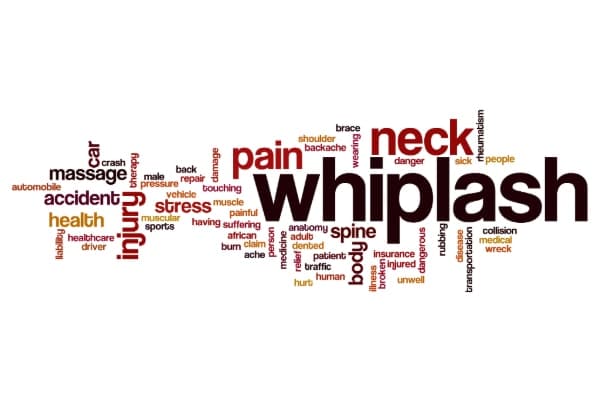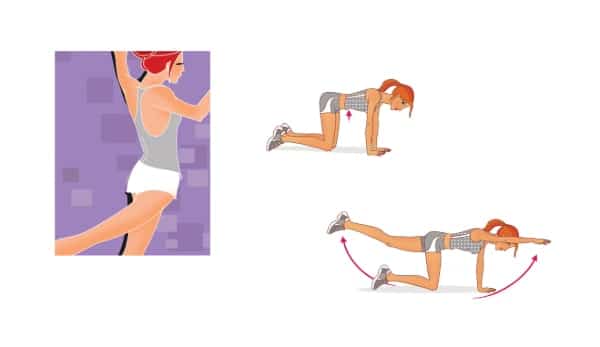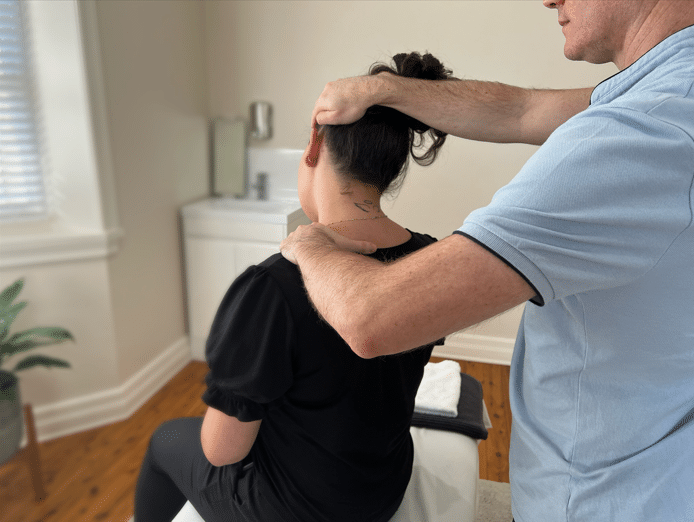- 02 9712 1736
- [email protected]
- 212 Great North Road, Five Dock, NSW 2046
- Open 7 days a week
We have all heard of whiplash and usually think car accident when we hear the term. However what really is whiplash and when should you start care. Whiplash is any neck injury that occurs due to a sudden and forceful back-and-forth movement of the neck. It is commonly associated with car accidents, especially rear-end collisions, but can also result from contact sports or physical assault. Understanding the symptoms of whiplash and when to seek care is crucial for proper diagnosis and treatment. So lets get into the nuts and bolts of whiplash, so you know when to seek care.

Whiplash, also known as neck sprain or neck strain, is an injury to the soft tissues of the neck. This includes the muscles, ligaments, and tendons. This type of injury typically occurs when the head is suddenly jerked backward and then forward. Causing the neck to move beyond its normal range of motion. This movement beyond your normal range of motion overstretches your soft tissues, causing damage.
Whiplash can affect anyone who experiences a sudden and forceful movement of the neck. It is not uncommon for people playing a contact sport to experience the symptoms of whiplash. Especially as we age. Physical assault is also common causes of whiplash. However, it is most commonly associated with car accidents, particularly rear-end collisions. Although all car accidents can lead to a whiplash injury.
The symptoms of whiplash may vary depending on the severity of the injury. However common symptoms include neck pain, stiffness, and loss of range of motion. Other symptoms may include headaches, shoulder pain, and numbness or tingling in the arms. Furthermore, whiplash symptoms are not limited to the neck region. Often you will feel a persistent dull achy pain between your shoulder blades. This is due to the fact that your neck muscles begin way down between your shoulder blades and come up to your neck. So, when thinking about whiplash don’t just limit yourself to neck pain.

Whiplash symptoms are relatively common, especially following car accidents. It is estimated that more than one million people in the United States alone suffer from whiplash injuries each year. Because whiplash can affect any age or gender demographic the incidence of whiplash injuries increase.
Whiplash injuries are typically graded on a scale from 0 to 4, with 0 indicating no injury and 4 indicating severe injury. Grade 0 is often used when there are symptoms but no physical signs of injury, while grade 4 indicates a fracture or dislocation of the neck.

As mentioned the most common causes of whiplash include rear-end car crashes, contact sports, and physical assault. However, any activity that causes a sudden and forceful movement of the neck can result in whiplash.

Whiplash is diagnosed based on a physical examination and a review of the patient’s symptoms and medical history. Imaging tests, such as X-rays, CT scans, or MRI scans, may also be used to rule out other possible causes of neck pain. Imaging can also be used to diagnose the severity of a whiplash injury.
Imaging tests, such as X-rays, CT scans, or MRI scans, may be used to diagnose whiplash and assess the extent of the injury. CT scans and MRI are the most prominent test done as these test show both the bones are soft tissues surrounding the bones in your neck and upper back. These tests are the gold standard to help identify any fractures, dislocations, or other abnormalities in the neck.

Treatment for whiplash may vary depending on the severity of the injury, but common approaches include medication, physical therapy, and in severe cases, surgery. Medications such as nonsteroidal anti-inflammatory drugs (NSAIDs) may be used to reduce pain and inflammation, while physical therapy can help improve range of motion and strengthen the neck muscles. In some cases, a cervical collar may be used to immobilize the neck and allow the soft tissues to heal. With a whiplash injury it is important to receive the correct treatment early as a delay in your care can lead to chronic neck problems.
Whiplash can lead to long-term complications if not properly treated. This is due to a lost of postural control and muscle weakness in the region. Your muscles will tighten post whiplash injury as your body’s way of protecting itself. This protection is great in the short term as the healing process begins. However leads to long-term symptoms of not treated correctly. These symptoms may include chronic pain, muscle spasms, and decreased range of motion in the neck. In severe cases, whiplash can also cause nerve damage or spinal cord injury.
Seeking prompt treatment for whiplash is essential to prevent long-term degeneration of the neck muscles and tissues. Here is a little fact you properly do not know. Your brain has a detailed map of your whole body. That means your brain always knows where every part of your body is all the time. This is because your body is always sending millions of pieces of information to your brain every second of the day. Following a whiplash injury this information becomes distorted as all your muscles have been overstretched. Therefore your brain tells your body to hold every muscle tight your neck, to protect your neck from further injury. This leads to long-term problems as you no longer use your neck properly. Treatment can help improve mobility and reduce the risk of developing chronic symptoms form this lack of movement, like pain and weakness or other neurological complications.

If you have suffered a whiplash injury, it is important to building strength and stability in the neck muscles. By building your muscle strength and stability you can help prevent further injury and improving overall neck function. Physical therapy exercises, such as functional movement training, can help strengthen the muscles and improve your range of motion.
Staying active is important at all stages of life. However, following a whiplash injury, keeping an active lifestyle can help prevent stiffness and improve overall neck function. Gentle exercises, such as stretching and range-of-motion exercises, can help maintain flexibility and reduce the risk of further injury. The important point to remember is that with an active lifestyle you are stretching your joints, muscle, tendons and ligaments. This stretching maintains the integrity of your body.
Healthcare professionals, such as physical therapists, can provide hands-on care to help manage whiplash symptoms and improve neck function. Techniques such as massage, manual therapy, and transcutaneous electrical nerve stimulation (TENS) can help reduce pain and improve mobility. It is highly recommend to visit a physical therapist following a whiplash injury. They will be able to provide you hands on care, but also a tailored stretching, strengthening and stability program for the best long-term result.

Whilst it is not possible to completely prevent a whiplash injury. There are several preventive measures that can reduce the risk of whiplash. Some of these include adjusting your vehicle seat and headrest to support your neck and minimize the risk of injury in a car accident. Always driving safely and defensively, to decrease the risk of an accident. Avoiding contact sports or activities that may put you at risk of neck injury. This especially applies as we age. With age your body naturally loose elasticity, making it easier to damage your soft tissues.

Whiplash is a common neck injury that can cause significant pain and discomfort. Understanding the symptoms of whiplash and seeking prompt care is crucial for proper diagnosis and treatment. With the right treatment approach, including medication, physical therapy, and preventive measures, most people can recover from whiplash and regain full neck function.

Forest Lodge, Annandale, Glebe, Leichhardt, Balmain, Haberfield, Canada Bay, Rozelle, Rodd Point, Wareemba, Stanmore, Petersham, Lilyfield, Hunters Hill, Enfield, Cabarita, Mortlake, Rhodes, Burwood Heights, Birchgrove, Gladesville, Huntleys Point, Abbotsford, Ashfield, Croydon Park, Croydon, Chiswick, Russell Lea, Burwood, Strathfield, Concord, Drummoyne, North Strathfield, Liberty Grove, Dulwich Hill, Lewisham, Camperdown, Ashbury, Homebush, Homebush West, Woolwich, Henley, Summer Hill, Sydney Olympic Park
212 Great North Road, Five Dock, NSW 2046
Onsite parking available
Phone: 02 9712 1736
Email: [email protected]

About
Five Dock Osteopathic & Chiropractic is located in Canada Bay, in Sydney’s Inner West. Servicing suburbs including Burwood, Croydon, Drummoyne, Five Dock, Haberfield, Concord, Abbotsford, Chiswick, Leichhardt, Wareemba, Russell Lea, Summer Hill, Strathfield.
Clinic hours
Monday, Tuesday, Thursday 7AM – 7PM
Wednesday, Friday 7AM – 6PM
Saturday 7AM – 2PM
Sunday 8AM – 2PM
Contact details